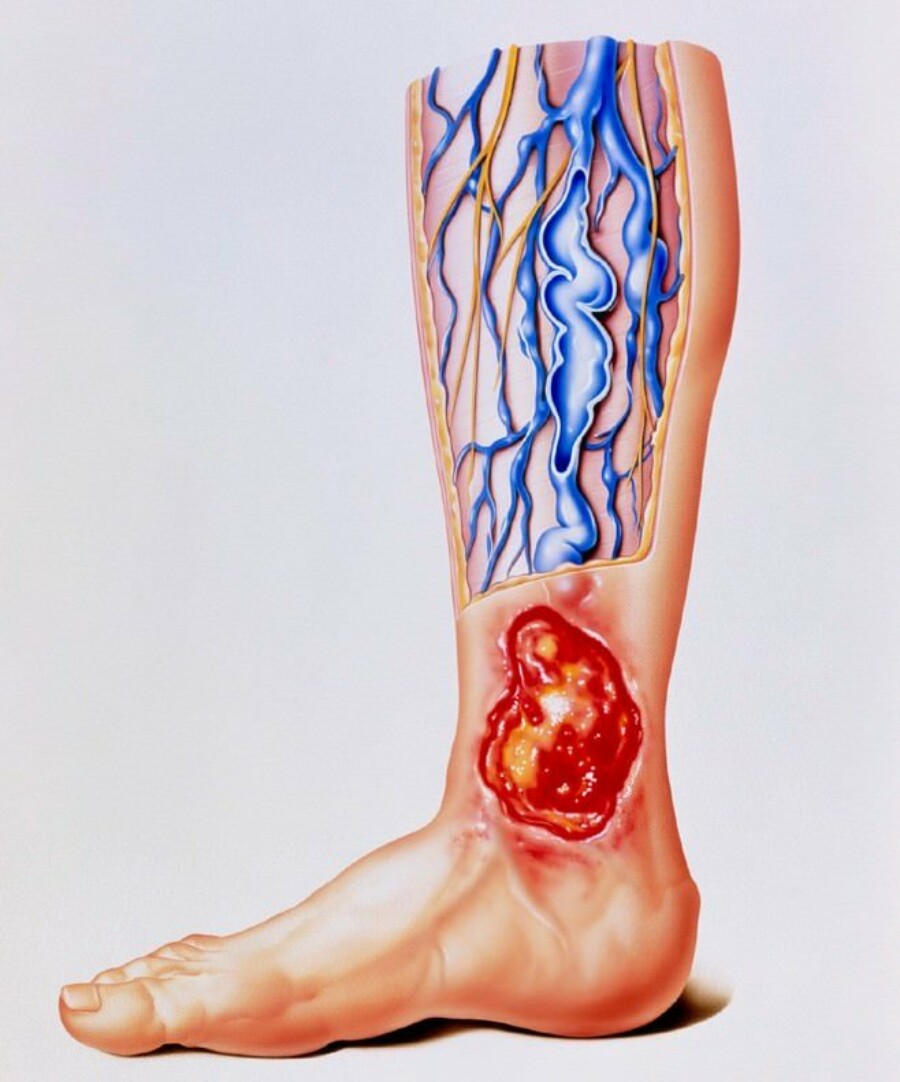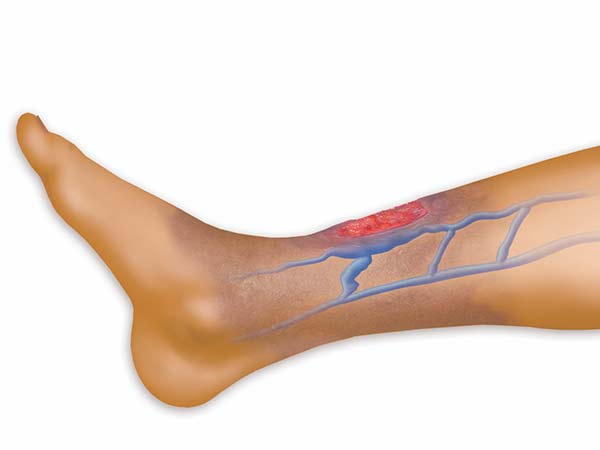

An ulcer (= wound) is simply an opening in the skin. The immediate cause is usually a minor injury to the calf or leg, which causes tearing in the skin. However, if there is an underlying problem, such as insufficient oxygenation of the skin, the area of tearing on the skin does not heal and may even increase in size. This creates a chronic or dull ulcer.
Ulcers of the lower limbs are more common in the elderly.
They are responsible for the disability and losing many hours of working hours of many people and - if left without care - in some cases can lead to the loss of the member.
What causes ulcers?
Venous ulcers (due to venous attitude) - they make up over 70% of all ulcers. Each time the calf muscles move, they help you to pump blood to the heart, while a series of valves prevent the blood from turning back. If these valves spoil, the blood flows backwards and increases the pressure on the veins. After a while, the veins will overflow and there will be a fluid leak outside of them at the level of venous capillaries and consequently the legs are swollen and thickening and spoiling the skin (this condition is called chronic venous insufficiency).
In the category of ulcers, we can also classify the relatively rare ulcers due to lymph node or cardiogenic edema because their treatment is related.
Arterial or ischemic ulcers-they make up about 10-15% of ulcers. The arteries of the lower members bring blood to the calves and legs. If they narrow significantly, usually due to atherosclerosis (that is, if peripheral obstructive arterial disease is created), the member will be reduced. This will lack oxygen and nutrients from the tissues of the foot, and the skin will become prone to slits, while reducing the possibility of healing.
Neuropathic or neurotropic ulcers (usually in diabetics) - 15% of diabetics will have ulcers during their lifetime, usually on the sole and fingers. Diabetes mellitus can "spoil" the nerves (diabetic neuropathy), causing a loss of feet aesthetics so that a minor injury and deformation of the feet (neuropathic arthropathy) does not perceive. Diabetes also increases the possibility of atherosclerosis. Depending on the exact cause that causes them, the ulcers on the feet of diabetics are classified as purely neuropathic or neuroischemic.
Another special category of atoneous ulcers is the so -called pressure ulcers or ulcers, due to long -term pressure at one part of the body (eg heel, Achilles tendon, coccyx) usually in people who have motor difficulties or remain in without any compulsory vascular disease or diabetic neuropathy.
Their treatment is conservative with ulcer care and the use of special patches. If the conservative treatment fails surgical cleaning and placement of a partial grid.
 English
English  Ελληνικά
Ελληνικά 